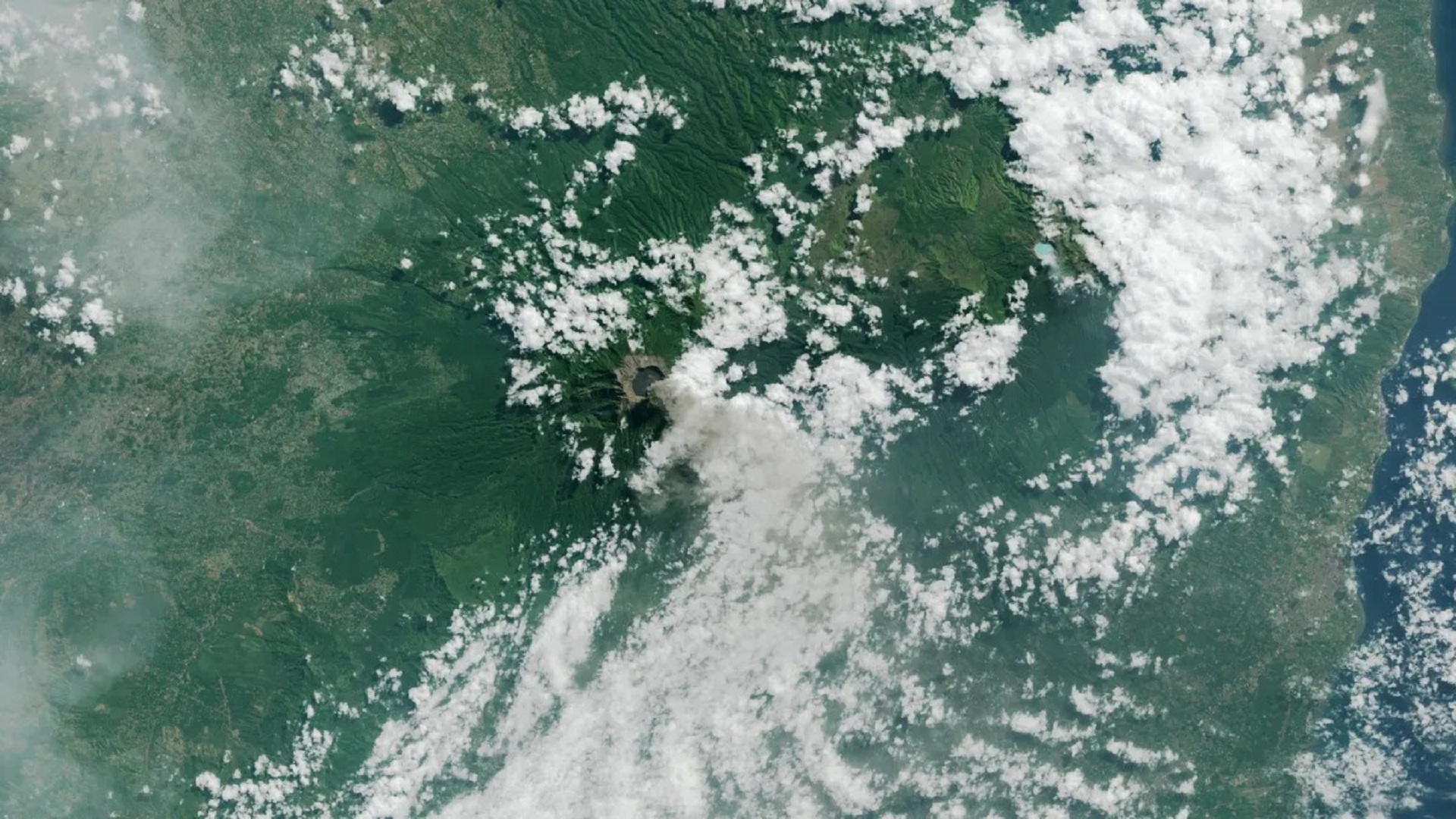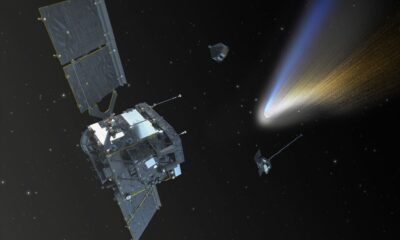Science
NASA’s AI Satellite Achieves Autonomous Targeting Breakthrough

NASA has successfully tested a satellite capable of autonomous decision-making in space, marking a significant advancement in satellite technology. The satellite utilized artificial intelligence (AI) to identify, analyze, and act on environmental data in under 90 seconds without any human intervention. This achievement was part of a recent trial of a system known as Dynamic Targeting, designed to enhance the capabilities of orbiting spacecraft.
Transforming Satellite Operations
Developed over a decade at NASA’s Jet Propulsion Laboratory (JPL), the Dynamic Targeting system mimics human cognitive processes when interpreting imagery. Rather than merely capturing images of the Earth below, the AI processes visual data in real time, identifying significant features like clouds or wildfires. The system then autonomously decides whether to capture a photograph based on the value of the data detected.
During the test, the satellite completed the entire analysis and decision-making process in less than a minute and a half. This ability to anticipate and analyze conditions ahead of time is particularly beneficial for Earth-observing satellites, which often confront the challenge of cloud cover. Traditional imaging methods waste time and resources capturing unusable data beneath clouds. Dynamic Targeting allows the satellite to assess cloud cover up to 300 miles in advance, ensuring it captures clear images of the Earth’s surface while conserving resources.
Steve Chien, an AI technical fellow at JPL and the project lead, emphasized the satellite’s advanced capabilities. “Instead of just seeing data, it’s thinking about what the data shows and how to respond,” he stated. This technology enhances the satellite’s ability to recognize critical events, such as wildfires, by interpreting the visual data meaningfully.
Next Steps and Future Applications
The recent test was conducted aboard CogniSAT-6, a CubeSat launched in March 2024 by UK-based Open Cosmos. To simulate a forward-looking imager, the satellite tilted itself 40 to 50 degrees to scan ahead along its orbital path. After collecting a preview image, onboard algorithms processed the data to locate cloud-free regions. The satellite then returned to a standard position to capture only clear and usable views while traveling at nearly 17,000 mph.
Following the successful avoidance of clouds, NASA plans to explore new applications for Dynamic Targeting that involve actively seeking out atmospheric phenomena. Future tests will focus on rapidly forming weather events, such as deep convective ice storms, which are often difficult to observe with conventional satellite methods. By employing specialized algorithms, the satellite will identify storm structures and use radar to collect high-resolution data as it passes overhead.
Additionally, the technology may be utilized to detect thermal anomalies, including wildfires and volcanic eruptions, which can develop quickly and require immediate observation. Dynamic Targeting’s rapid decision-making capabilities make it well-suited to detect and respond to these changing conditions in real time.
NASA’s vision for Dynamic Targeting extends beyond Earth. The agency is considering its application in planetary science missions, such as identifying geysers on icy moons or monitoring dust storms on Mars. The original concept drew inspiration from research conducted with the European Space Agency’s (ESA) Rosetta orbiter, where similar AI techniques facilitated the detection and imaging of plumes from Comet 67P.
Moreover, there are plans to implement this technology across satellite constellations through a project named Federated Autonomous Measurement. In this initiative, a leading satellite would detect an event and instantly communicate the data to trailing satellites. The subsequent spacecraft could then adjust their orientation to focus on the phenomenon, creating a coordinated and dynamic response system in orbit.
As NASA continues to refine and expand the capabilities of Dynamic Targeting, the potential for enhanced satellite operations and scientific discovery grows, promising to transform how we observe and understand our planet and beyond.
-

 Technology5 months ago
Technology5 months agoDiscover the Top 10 Calorie Counting Apps of 2025
-

 Health3 months ago
Health3 months agoBella Hadid Shares Health Update After Treatment for Lyme Disease
-

 Health3 months ago
Health3 months agoErin Bates Shares Recovery Update Following Sepsis Complications
-

 Technology4 months ago
Technology4 months agoDiscover How to Reverse Image Search Using ChatGPT Effortlessly
-

 Technology1 month ago
Technology1 month agoDiscover 2025’s Top GPUs for Exceptional 4K Gaming Performance
-

 Technology3 months ago
Technology3 months agoElectric Moto Influencer Surronster Arrested in Tijuana
-

 Technology5 months ago
Technology5 months agoMeta Initiates $60B AI Data Center Expansion, Starting in Ohio
-

 Technology5 months ago
Technology5 months agoRecovering a Suspended TikTok Account: A Step-by-Step Guide
-

 Health5 months ago
Health5 months agoTested: Rab Firewall Mountain Jacket Survives Harsh Conditions
-

 Lifestyle5 months ago
Lifestyle5 months agoBelton Family Reunites After Daughter Survives Hill Country Floods
-

 Health3 months ago
Health3 months agoAnalysts Project Stronger Growth for Apple’s iPhone 17 Lineup
-

 Technology5 days ago
Technology5 days agoOpenAI to Implement Age Verification for ChatGPT by December 2025




















